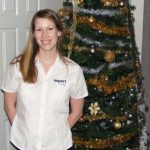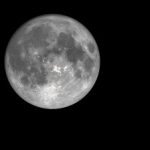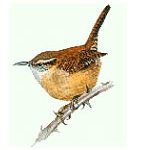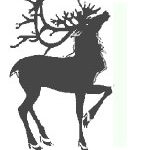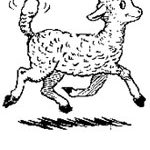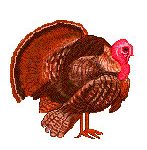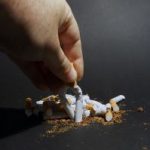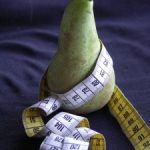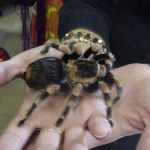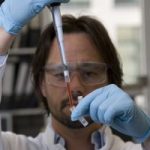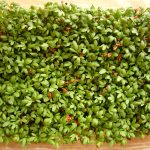Welcome to the very festive December charity newsletter. It’s hard to believe that Christmas is yet again upon us, the last 12months have simply flown!
In this special end of year edition we take a look back at 2010; the highlights of the year, the amazing people who have helped Young Heroes make a big difference and the wonderful families we have supported.
You also have the usual monthly features to look forward to with Katie’s Corner, fundraising idea of the month, latest cancer news and another instalment of Cancer Controversies where again we probe well known cancer myths to separate fact from fiction.
As the end of 2010 draws near, I would like to say a big thank you to everyone for your wonderful feedback about the newsletter. I can honestly say writing the newsletter every month is an absolute joy and since my first edition I have met some amazing people including fundraisers, Young Heroes and their families and general supporters of the charity.
I look forward to bringing you more newsletters in 2011 but until then I would like to wish you all a very Merry Christmas and a prosperous New Year.
Kindest Regards
Kim Tetlaw
Editor
Charity Nippy Dip draws closer
So far the December weather has wreaked havoc up and down the country with its plummeting temperatures and heavy snow.
With temperatures dipping as low as -20 we have all had a small sample of the bitter conditions facing Impact’s Livings’ Donna Binyon when later this month she takes part in the Sunderland Boxing Day Dip.
With less than 3 weeks to go until the event, Donna remains confident but admits she is starting to feel the nerves “I’m really looking forward to the dip now but am slightly nervous because I know this year will be the coldest yet. The snow fall has been particularly bad in Sunderland and the beach will probably be covered with snow and ice.
Over the last couple of weeks Donna and her fundraising team have been busy choosing a fancy dress theme. “The last couple of times we have dressed as the Flintstones and the Village People. This year we have decided on Toy Story, we’re hoping to really stand out from the crowds and raise even more money for Young Heroes!”
Please show your support and visit http://www.justgiving.com/Donna-Binyon to make a secure and simple online donation.
Watch out for next month’s newsletter when we see photos of the Toy Story revelers making their Nippy Dip.
We wish them the very best of luck
New charity telephone number
Please note as of the 1st December 2010 the telephone number for Sheffield’s Wilfred Drive office has changed.
The new number is 0114 243 1850 (also fax number)
Thank you’s
Young Heroes would like to thank Clare Hiles from Manchester for her kind donation of toys and clothes to tenants. We are most grateful.
We would like to say a both a big happy birthday and thank you to Dawn Dyson from Castleford who recently celebrated a special birthday. Instead of presents from family and friends, Dawn requested donations to two charities close to her heart. Young Heroes feel extremely privileged to have been chosen by Dawn and we thank you so much for your support.
Buying last minute Christmas pressies?
This year why not buy your Christmas presents online through easyfundraising.org.uk and raise money for Young Heroes with no extra cost or effort at all.
Just register at www.easyfundraising.org.uk. Choose Impact Young Heroes from the list of charities and simply register your name and email address and away you go, simple as 1,2,3.
It is completely free and you don’t pay anymore for your shopping.
The retailer simply donates a percentage of the purchase price straight to the charity via easyfundraising. You can shop with 2000+ Brand Name retailers including Boots, Play.com, Argos, Currys and HMV.
**WIN ?1500 FOR YOU & ?1500 FOR YOUNG HEROES** with easyfundraising
Remember the excitement of opening your advent calendar and trying to guess what would be behind the window each day?
This December, relive your youth with the easyfundraising Advent Calendar.
Easyfundraising have teamed up with top retailers and hidden £11,000 worth of Christmas presents behind the windows of their online calendar.
Prizes include TVs, game consoles, a luxury chocolate hamper, an iPad, a spending spree with a top fashion store, a dozen bottles of Champagne, a selection of top toys and loads more!
And if that’s not exciting enough, every time you click on a daily window, they will enter you in the Christmas Day Grand Prize Draw to win £1500 for you AND a £1500 donation Young Heroes! (Terms and Conditions apply, see http://www.easyfundraising.org.uk/ for details)
To register your details and be in with a chance to win simply visit: http://www.easyfundraising.org.uk/
Register your details with Impact Young Heroes as your cause and then click on Christmas Advent Calender and simply follow the instructions.
Don’t forget to visit the advent calendar each day and click on the correct day’s window to be entered into the draw to win the present on offer that day. Yes, it’s that easy!
Good luck!
How to enter
Christmas Day Grand Prize
More ways to win the big prize!
- Shop – everytime you shop with easyfundraising this Christmas, we’ll give you an entry into the Grand Prize Draw.
- Share – spread the word and we’ll give you one entry for every friend you tell by email and one entry when you share on Facebook or twitter, click here to do this.
Cancer Controversies
Throughout the years there have been many cancer myths floating around.
The question is: Is there any truth to these cancer myths?
Keep reading and learn fact from fiction!
Cancer Myth
1) Hair dyes can lead to cancer
Hair dyes have been linked to a variety of cancers including bladder cancer, breast cancer, leukemia’s and lymphomas. But there is no clear evidence that hair dyes could cause any of these cancers.
In 2008, the International Agency for Research into Cancer (IARC) said that hairdressers “probably” have a slightly higher risk of cancer because they are regularly exposed to certain chemicals. They can reduce their exposure to these chemicals by wearing gloves.
But there’s not enough evidence to say whether people who use hair dyes themselves have a higher risk of cancer as a result.
In the 1970s some hair dye ingredients were found to damage DNA and cause cancer in animals. But since then, the use of these chemicals has been discontinued and modern dyes are thought to be much safer. But cancer can take many years to develop – so it could be that the link we are seeing now between working as a hairdresser and cancer is because of exposures to these older chemicals many decades ago.
2) Living near power lines increases likelihood of childhood leukemia
Everything that uses or carries electricity, from household appliances to power lines, produces an electromagnetic field (EMF). There is a lot of worry that EMFs produced by power lines can cause cancer, particularly leukemia in children.
There is little strong evidence to link power lines to adult cancers. But some studies have suggested a statistical link between exposure to EMFs and a slightly higher risk of childhood leukemia.
The UK has very low levels of EMF compared to countries like the USA. One study that looked at the existing evidence suggested that the average EMF levels in the UK do not increase the risk of any cancer.
But the very highest levels of EMF were associated with double the risk of childhood leukemia. If this effect is real, it would mean one extra case per year for every 10,000 people living in affected homes. But bear in mind that only about 1 in 250 UK homes experience EMF levels that high.
Despite this association, we cannot say for sure that EMFs actually cause childhood leukemia. The link could be explained by biases in the research or by something else that is common to homes with high EMF levels. And one of the largest studies – the UK Childhood Cancer Study (UKCSS) – found that even children from UK homes with the highest estimated EMF levels do not have higher risks of childhood leukemia.
Because the evidence is limited and inconsistent, the International Agency for Research on Cancer (IARC) has classified EMFs as a ‘possible’ cause of cancer. This means that there might be a risk but we cannot say for sure.
Even if future research shows that EMFs from power lines can cause childhood leukemia, they are unlikely to be a major cause of this disease. Fewer than one in a hundred children in the UK who develop leukemia live in homes with the highest EMF levels.
3) Shift work increases cancer risk
Some studies have raised concerns that working in shifts or being exposed to light at night could increase the risk of cancer, particularly breast cancer. Scientists are trying to work out if this is actually true and for now, the evidence is still uncertain.
In 2007, the International Agency for Research into Cancer (IARC) concluded that working night-shifts might increase the risk of cancer. IARC classified shift-working in its second highest category of risk (out of a total of four). This means that there is some evidence that shift-working could affect the risk of cancer, but that more research is needed to say for sure.
What does the evidence say?
There have only been a few studies looking at cancer rates in people who work night-shifts compared to those who do not. Most of these have focused on breast cancer. The majority of these studies have found that people who work night shifts for a long time are slightly more likely to develop breast cancer than those who do not.
But many of these studies had important flaws.
- They did not account for other things that can affect a person’s breast cancer risk. These include their body weight, how much alcohol they drink, how many children they have, their social status, whether they use hormone replacement therapy, and so on. Studies that did adjust for these other risks found a weaker link between shift-working and breast cancer.
- The studies also used different definitions of what “shift-work” actually is.
- Many of them only focused on a single group of workers, such as nurses or flight attendants. So it is hard to say whether the results apply to all people who work night shifts.
The evidence is stronger in animal studies. It seems that disrupting an animal’s body clock can increase the risk of cancer. But the picture is much less clear for shift work and breast cancer in people.
4) Agricultural pesticides cause cancer
Pesticides are widely used in agriculture and there are concerns that they could increase the risk of cancer.
Some studies have suggested that pesticides could increase the risk of leukemia lymphomas, brain cancer, breast cancer and prostate cancer. For now, the evidence is not strong enough to give us any clear answers.
Agricultural workers and farmers
People exposed to higher levels of pesticides as part of their job – for example in industry or in farming – may be at slightly higher risk of certain cancers, particularly leukemia’s and lymphomas.
The International Agency for Research into Cancer (IARC) have looked at the evidence and said that regularly spraying pesticides as part of your job “probably” slightly increases the risk of cancer.
But for individual pesticides, the evidence was either too weak to come to a conclusion, or only strong enough to suggest a “possible” effect.
Some potentially dangerous pesticides such as DDT and lindane have been used in the past but are now banned.
Problems with the evidence
The scientific evidence on pesticides and cancer is still uncertain and more research is needed in this area. So far, the studies that have been done share common problems:
They usually involve a small number of people. This makes it more likely that their results are down to chance.
It is difficult to work out the amounts of pesticides that people were actually exposed to. Most studies estimate these exposures based on things like a person’s job. Others ask people with cancer to remember whether and how they used pesticides in the past. Their answers might not be accurate and they may be influenced by worries that pesticides were responsible for their cancer.
There is a wide variety of pesticides and it is not clear which, if any, affect the risk of cancer.
The results from different studies are not consistent. Some suggest that pesticides increase the risk of cancer but others do not.
Pesticides on fruit and vegetables
High doses of some pesticides can cause cancer in animals, but the levels found in foods are much, much lower.
Fruit and vegetables sometimes contain very small amounts of pesticides so it is a good idea to rinse fruit and vegetables before eating them. But there is no evidence that these small amounts increase the risk of cancer in people who eat them. In fact, eating lots of fruit and vegetables actually reduces your risk of several cancers, despite any pesticide residues on them.
PLEASE NOTE: All information provided has been sourced from outside of Impact Young Heroes therefore the author or Young Heroes assumes no responsibility as a result of this article.
Sourced from http://info.cancerresearchuk.org/healthyliving
Katie’s Christmas Corner
Merry Christmas and a happy new year to you all! I hope you enjoy my Christmas quiz.
What is the Irish custom of “feeding the wren” or “hunting the wren” on December 26th?
A) Taking one’s in-laws out to dinner
B) Carrying a wren door to door, to collect money for charity
C) Leaving a basket of cakes at the door for passers-by
D) Putting out suet and seeds for the wild birds
Which of these names does NOT belong to one of Santa’s reindeer?
A) Comet
B) Prancer
C) Blitzen
D) Klaxon
In Tchaikovsky’s ballet “The Nutcracker”, who is the nutcracker’s main enemy?
A) A girl called Clara
B) The King of the Mice
C) Dr. Almond
D) Drosselmeyer the magician
All through the Christmas season in old England, “lambswool” could be found in the houses of the well-to-do. What was it?
A) Imitation snow used in decorations
B) A brew of hot ale with roast apples floating in it
C) The material used for knitting Christmas gifts
D) A fluffy confection made from almonds and sugar
In Victorian times, most Londoners would have been familiar with the “goose club”. What was it?
A) A pantomime troupe specializing in slapstick
B) A stout stick used for slaughtering geese
C) A banjo-like instrument used in door-to-door carolling
D) A method of saving to buy a goose for Christmas
After Scrooge has reformed his life at the end of Charles Dickens’ A Christmas Carol, he invites Bob Cratchit to join him for some “smoking bishop”. What did he mean?
A) A fast variation of chess popular in Victorian London
B) A premium pipe tobacco
C) A hot spiced drink
D) A Christmas pudding, soaked in brandy and set alight
In Victorian England, turkeys were popular for Christmas dinners. Some of the birds were raised in Norfolk, and taken to market in London. To get them to London, the turkeys:
A) Were herded by sheep dogs
B) Flew
C) Rode in huge wagons called “turkey-vans”
D) Were supplied with boots made of sacking or leather
Many movies on Christmas themes have been made for television and the cinema over the years, including dozens of versions of Charles Dickens’ A Christmas Carol. Which of the following films has NOT yet been made?
A) The Jetsons’ Christmas Carol
B) Popeye’s Christmas Carol
C) Mr. Magoo’s Christmas Carol
D) Mickey’s Christmas Carol
The jólasveinar, or “yule lads”, are a traditional part of an Icelandic Christmas. What are they?
A) A band of thirteen gift-giving goblins
B) In charge of Santa’s reindeer
C) Woodcutters
D) The best male singers from each village
In Greek legend, malicious creatures called Kallikantzaroi sometimes play troublesome pranks at Christmas time. What should you do to get rid of them?
A) Placate them with gifts of rice pudding
B) Burn either salt or an old shoe
C) Sing hymns in a loud voice
D) Throw your sandals at them
Katie’s Corner Answers
B) Carrying a wren door to door, to collect money for charity
D) Klaxon
B) The King of the Mice
B) A brew of hot ale with roast apples floating in it
D) A method of saving to buy a goose for Christmas
C) A hot spiced drink
D) Were supplied with boots made of sacking or leather
B) Popeye’s Christmas Carol
A) A band of thirteen gift-giving goblins
B) Burn either salt or an old shoe
Fundraising Idea of the Month
There are plenty of fun and challenging ways you can raise money for Young Heroes through your New Year celebrations and resolutions. Why not take a look at our ideas to help kick start your fundraising campaign.
Lose lbs, gain pounds
If your New Year’s resolution is to loose those extra Christmas party pounds, then why not get your friends and family to sponsor you slim. People could sponsor you a small amount for each pound you loose or a larger sum if you reach your final target!
Beat your phobia
Why not get over your worst fears in 2011 and sign up for one of our challenging events. Fear of flying? Ask us about our skydiving events for you to beat the fear. Scared of spiders? Why not get sponsored to hold a tarantula at a local zoo or safari park.
Kick the stick
Giving up smoking for the New Year? Why not donate half of what you would have spent on cigarettes to Young Heroes. Alternatively, people could donate to our charity if you manage to last a week, a month or even the whole year!
Out with the old
Christmas is also an ideal time to have a clear out and sell your unwanted items in aid of Young Heroes. You may choose to do this via an online auction site like eBay or through a table top or car boot sale.
Latest Cancer News
Trial results show dramatically improved survival for relapsed childhood leukaemia
A new treatment increases survival to almost 70 per cent for children whose acute lymphoblastic leukaemia (ALL) returns, according to the results of a trial published online.
The results of the trial – funded by Cancer Research UK and Leukaemia & Lymphoma Research2 – were so promising that now all children with relapsed ALL are being offered the trial drug Mitoxantrone.
Two hundred and sixteen children across the UK, Australia and New Zealand took part in the trial, 111 were given the standard treatment Idarubicin and 105 were given Mitoxantrone.
After three years, 69 per cent of children given Mitoxantrone had survived the disease, compared to 45 per cent of those given Idarubicin.
Professor Vaskar Saha, a Cancer Research UK paediatric oncologist based at the Paterson Institute in Manchester, said: “These striking results show just what a powerful drug Mitoxantrone is in treating children whose leukaemia has returned, offering hope to many families across the country.
The significant increase in survival seen in this trial has resulted in Mitoxantrone being offered to all children with relapsed ALL since 2008. As well as improving survival, children given Mitoxantrone also experienced fewer side effects.
Over the last 30 years the number of children who have survived ALL has risen from 50 to over 80 per cent but similar improvements have not been seen in children whose cancer returns. It remains the leading cause of cancer death in children and survival for children whose leukaemia returns had until now remained constant at around 50 per cent.
Professor Saha added: “As a result of this trial, Mitoxantrone is now the standard treatment for relapsed ALL, and is having a significant impact on the number of children who beat the disease worldwide. This is the first time that a trial in ALL has been stopped so early after one drug had such clear benefits for patients.”
Sourced from http://info.cancerresearchuk.org/news
Eating watercress every day could stop breast cancer tumours from growing
Eating watercress every day could help to prevent breast cancer, researchers have found.
The ‘super food’ can help to ‘turn off’ a signal in the body and thereby help starve the tumour of essential blood and oxygen, according to experts at the University of Southampton.
The found that volunteers who ate 80 grams of watercress a day, equivalent to a cereal bowl sized helping, had elevated levels of cancer-fighting molecules in their blood within hours of eating the salad leaves.
The research found that the compound, phenylethyl isothiocyanate (PEITC), which gives the salad leaf a peppery taste, is able to interfere with the function of a protein that plays a critical role in cancer development.
As tumours develop they rapidly outgrow their existing blood supply and further development isn’t possible until they are able to obtain enough oxygen and nutrients to maintain the growth of cancer cells.
To get past this roadblock, the cancer cells send out signals which cause the surrounding normal tissues to grow new blood vessels into the tumour which then supply oxygen and nutrients.
The protein Hypoxia Inducible Factor (HIF) is at the heart of this process of inducing new blood vessel growth. However, PEITC, of which watercress is the richest natural source, was shown in laboratory tests to have the ability to block the function of HIF.
The research, which was funded by the Watercress Alliance, provides new hope to the 45,000 women diagnosed with breast cancer each year.
Sourced from: http://www.dailymail.co.uk/health
Donors and fundraisers of 2010
Each year Impact Young Heroes continues to be astonished by the level of support and donations we receive from kind individuals and groups. It is wonderful to know that others are as passionate and dedicated about the charity as we are and we would like to take this opportunity to say a big thank you for your kindness.
Over the last 12 months we have seen just about every fundraising event you can imagine with loyal supporters doing skydives, tea parties, marathons and fancy dress walks and even medieval days.
Below are just a few of the individuals who have helped make a big difference this year.
Trudie Newlove, Driffield
The Brooman family, Halifax
Charlie and Stephen Dowen, Bedfordshire
Lyndon Ashley, Bradford
The North East Guitar Club, Sunderland
The Forest of Galtrees
Yvonne Hewitt and Salon 36 Hair Studio, Barnsley
Dr Richard and Jenny Howarth and committee, York
Karen @TodaySure Projects Ltd
Eddie Robinson, Bradford
Colin Swinney, Manchester
Donna Binyon, Bradford
Dawn Dyson, Castleford
Young Heroes wish to thank everyone who has supported the charity over the last 12 months and wish you all a very Merry Christmas and a Prosperous New Year.
Action Planning
Adam Barrett
Andrew Lodge – Sterling Capital Reserve
Andy Olsen
Andy Stuart
Balbir Panesar – Bradford Chamber of Commerce
Beverley Law
Bill Nimmo
Birmingham Children’s Hospital
Brian and Jackie Clark
Business In The Community
Carol Robinson – Clic Sargent Manchester
Charlie and Stephen Dowen
Charlotte Hughes
Chris Lightfoot
Chris Taylor
Christa Greswold
Christie Hospital Young Oncology Unit
Christine Coates – Clic Sargent Birmingham
Clare Hiles
Claire Bennett – Common Purpose
Colin Swinney – CRS Insurance Services
Daniel Hewitt
David Butler -Rotary Club Solihull
David Wright – Christie’s Hospital
Diane Hubber – Macmillan
Dr Richard and Jenny Howarth
Dr Miguel
Dr Shastri and colleagues- Insure Cancer
Eddie Robinson
Faye Alexander
Freida Burke – Lanzarote
Gillian Burns
Graham and Lynn Penn
Heather Irvine Health and Beauty
Impact Staff
Jack Peters
Jack Petty
James Olsen
Janis Ball – Clic Sargent Birmingham
Jason Cox
Jayne Turner
Jim Leon, Cornwall
John Redding
Jonny Presley – Keighley Cougars
Judy Stirton – Clic Sargent Manchester
Julian Hanson
Julie Fox
Karen at TodaySure Projects Ltd
Keith & Michelle Stead
Kerry Hamilton
Kim Barnett
Kim White
Lorraine Case – Christies Hospital
Leeds St James Hospital
Lesley Neil – York Against Cancer
Lindsey Cherry – Weston Park
Liz and Bradley Watmuff
Lorraine, David and Damien –
Louise Dolphin – Click Sargent Sheffield
Lucia Wine Bar – York
Lyndon Ashley
Mahammed Akibur Rahman
Margaret Beaton
Margaret Price
Marj Day – Clatterbridge Young Oncology Unit
Matthew Gaunt
Maureen Canelle – Clic Sargent Newcastle
Michelle Renard
Mick and Elaine Murphy – Wyke Christian Fellowship
Mike and Diyhane at Island Mobility, Lanzarote
Miss Jo Carter – Goodricke College
Mr Adrian Horsley – Yorkshire Building Society
Mr Dave Stockton
Mr Ken Reece – The Anglican Parish of St Laurence
Mr and Mrs Bacon
Mr and Mrs McCormack
Mr and Mrs O’Brien
Mr. Norman Pattison
Mrs and Mrs John Glasswell
Mrs Martin
Neil Shaw – Leeds St James Hospital
Newcastle Royal Victoria Infirmary
Nicola Massey
Nikki Easton
Nuestra Senora Del Carmen Church, Playa Blanca
Paul Caddick – Caddick Developments Ltd
Paul Mayer – York District Hospital
Paul and Sharon Mullen
Penny Bean
Rachael George – Face to Face Marketing
Rachel Nagy
Revd. Chris Ellis and the Community of Stillington
Robert Law
Rooftops Bar, Playa Blanca
Rosmund Smith – MCIS
Rowland Clark – Bradford Chamber of Commerce
Sarah Atherton
Sarah Dawson
Sarah Hayarth – Clic Sargent Leeds
Saxophony
Salon 36 Hair Studio
Sheffield Western Park Hospital
Sheila Lewis and Lanzarote Mothers Union
Simon Massey – Langley’s Solicitors
Simon and Dawn Dyson
Solihull Indoor Bowling Club
Stacey Barham
Staff Nurse Sarah Donohue – Freeman Hospital
Steven Wright
Sue Harrison – Clic Sargent Leeds
Susan Mottram
The Albiston family
The Anglican Parish of St Laurence in Lanzarote
The Brooman family
The Dakin family
The Forest of Galtrees
The Keenan family
The Macurrie family
The North East Guitar Club
The Topps family
The Valentine family
Thomas Connor
Tom Higson
Trudie Newlove
Vera Parton
Victoria Flanagan – Teva UK
Yvonne Hewitt

